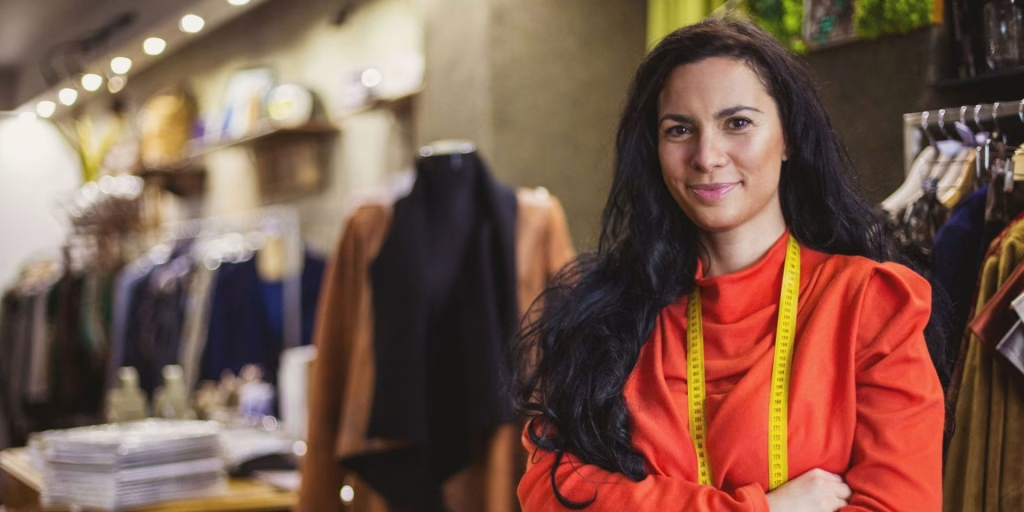
Unequal pay: Funding female entrepreneurs
Female entrepreneurs face several challenges in financing and growing a business, often including limited access to capital. Nevertheless, there are also new opportunities and resources available to help bridge the gender gap and support the growth and success of women-owned businesses.
Entrepreneurship offers a more dynamic workplace than traditional, rigid, forty-office-hours-per-week roles. It is an opportunity to convert a passion into a game-changing activity that can generate impact and money.
But for any new business, regardless of size, the initial investment period can be uncertain and volatile. In some cases, entrepreneurs secure funding from angel investors or venture capital. But there are other possibilities.
Entrepreneurs have different ways of funding their ventures. Initially, they may finance their business with personal funds. Family and friends may also provide financial support during the early stages of the business. Subsequently, entrepreneurs may collaborate with well-funded partners who can help sustain the business or find specific programmes or initiatives that can help them obtain funding.
Finally, business loans may also be used to access start-up finance.
Personal savings and the gender gap
From a gender perspective, it is possible to identify several differences in access to funding for men and women entrepreneurs. These differences can be summarised into different categories that allow a better understanding of the issue.
Research has suggested that women-owned businesses are less likely to receive venture capital or angel investment and are more likely to rely on personal savings or loans from friends and family. This can make it more difficult for women entrepreneurs to access the capital they need to start and grow their businesses.
A start-up founder said this is a big issue: “I could tell that venture capital firms are more comfortable speaking to your male co-founder. They reach out to your male co-founder first and only then to you. This needs to be changed. Everyone keeps saying that we need to invest more in start-ups and businesses run or founded by women. But when it comes to opening ‘the purse’ the statistics are not good. In 2021, about two per cent of venture capital investment went to female-funded start-ups, which is a very sad figure.”
This is confirmed by our research. When asked about how they found the money to start a business, female entrepreneurs responded that their own savings (42 per cent), a loan from family or friends (25 per cent), and a bank loan are the main sources (17 per cent). Less frequent answers were investments in the capital of the company (seven per cent) or grants from donors (two per cent).
Regarding start-up investment, an SME owner said: “The initial money usually comes from friends, family and fools. I invited my brother and we invested all we had in our first family business. We always reinvested our revenues in our business as we didn’t have any other investment in our family business. Then, I invited business angels, and I was funded by an investment fund venture capital.”
Financing medium-sized businesses
Of course, the source of funding also depends on the amount of money that is needed. 35 per cent of respondents stated that they needed less than 1,000 US dollars while 28 per cent chose values between 1,000 and 5,000 US dollars, and 17 per cent from 5,000 to 10,000 US dollars. Other options were ranked below 10 per cent, and only four per cent said they needed more than 50,000 US dollars to start their business.
On the same subject, another SME owner illustrated the financing needs she faced when making a career change and starting her own business. She said: “I started [my business] with about 300 euros of investment, in my own kitchen. I just had to buy some equipment and some boxes, so I could sell online.”
Furthermore, this is explained in relation to the size of the business. According to our respondents, most businesses have no employees or benefit from the help of friends and family in running them (40 per cent). 37 per cent also state they are private entrepreneurs.
Then, 14 per cent say they have two to five employees, six per cent six to 10 employees, and only four per cent have 11 or more employees. During the in-depth interviews, one start-up founder said that not only could she not afford as many employees as she wanted, but also that employees needed to be versatile and adaptative to different roles: “Our team is composed of overqualified specialists because being a start-up… people must be everywhere and everything at the same time.”

The funding gap for female entrepreneurs
Gender differences are obviously not universal and intertwine with challenges that are not only faced by women entrepreneurs but by women in general in certain sociocultural contexts, or other underrepresented groups.
That was also the opinion of a business enabler working at an international organisation: “There are many issues regarding access to finance and making women bankable. (…) the business environment is not gender-responsive,” she said.
Sometimes, when women-owned businesses do receive funding, they tend to receive less than male-owned businesses. This can make it more difficult for women entrepreneurs to scale their businesses and compete with larger companies. If female entrepreneurs face a higher rejection rate when applying for funding it can discourage them from trying again in the future.
Moreover, some studies have shown that women are underrepresented among investors and that women-led start-ups are less likely to receive funding from venture capital firms that have a male-dominated partner group.
This sort of representation matters in different areas of the business world. Often women still feel discredited by men in their business activities. As mentioned by a start-up founder, “My usual environment is that I am the only woman in the room. We are lacking women in C-level management positions. When I speak at the table, there is always one person who is not listening to me. He has something else to do such as checking his phone, but only when I am speaking. But I don’t care.”
Support initiatives and networks for female entrepreneurs
As such, it is fundamental to provide female entrepreneurs with access to networks and resources, to connect with potential investors or lenders. Especially in times of crisis as one start-up founder mentioned: “I was never a part of such communities. I know it’s important, but I just didn’t have time. Now I feel that it’s very important to contribute, especially since the war started. You can see the immediate results and it’s amazing how it works”.
Nonetheless, survey results showed that most female entrepreneurs did not know about any initiatives to support women in business in their country (48 per cent). They were mostly aware of government initiatives (25 per cent) and other private initiatives (20 per cent). 14 per cent also said they knew about initiatives from non-governmental organisations and 13 per cent of initiatives led by international organisations.
Overall, while it may be more difficult for women to access funding than men, there are also opportunities and resources available to help bridge this gap.
There are concrete initiatives and programmes that focus on investing in women-led companies, accelerators and incubators that provide mentorship and resources to women entrepreneurs, and initiatives that aim to increase the representation of women in venture capital and angel investing.
——
Global companies often propose a number of joint partner opportunities for SMEs to simplify their lives: discounts for business tools, software, delivery, financial or translation services, chatbots. Solutions such as Visa Tap to Phone, which transforms a smartphone into a POS-terminal, or Visa Concierge Service in the role of personal assistant to help save time and money and invest more of them into business development rather than routine or technical details. Check the opportunities for your country: Ukraine, Moldova, Belarus, Georgia, Armenia, Azerbaijan, Kazakhstan, Turkmenistan, Uzbekistan, Kyrgyzstan, Tajikistan, Serbia.
New Free Courses — Made for Ambitious Women Entrepreneurs!
It’s time to grow smarter, adapt faster, and take your business global.
Explore two powerful courses available exclusively to She’s Next members:
The Reinvention Masterclass for Start-up Founders
Beyond Borders: Building for Global Success
Enroll today — it’s free!






Responses